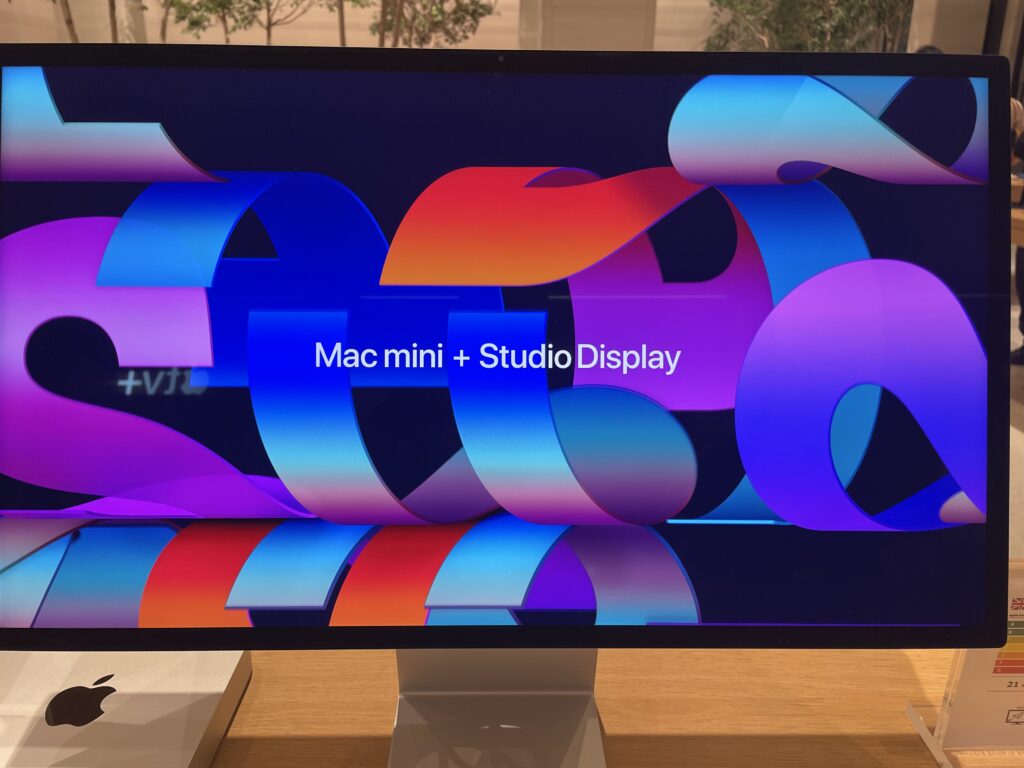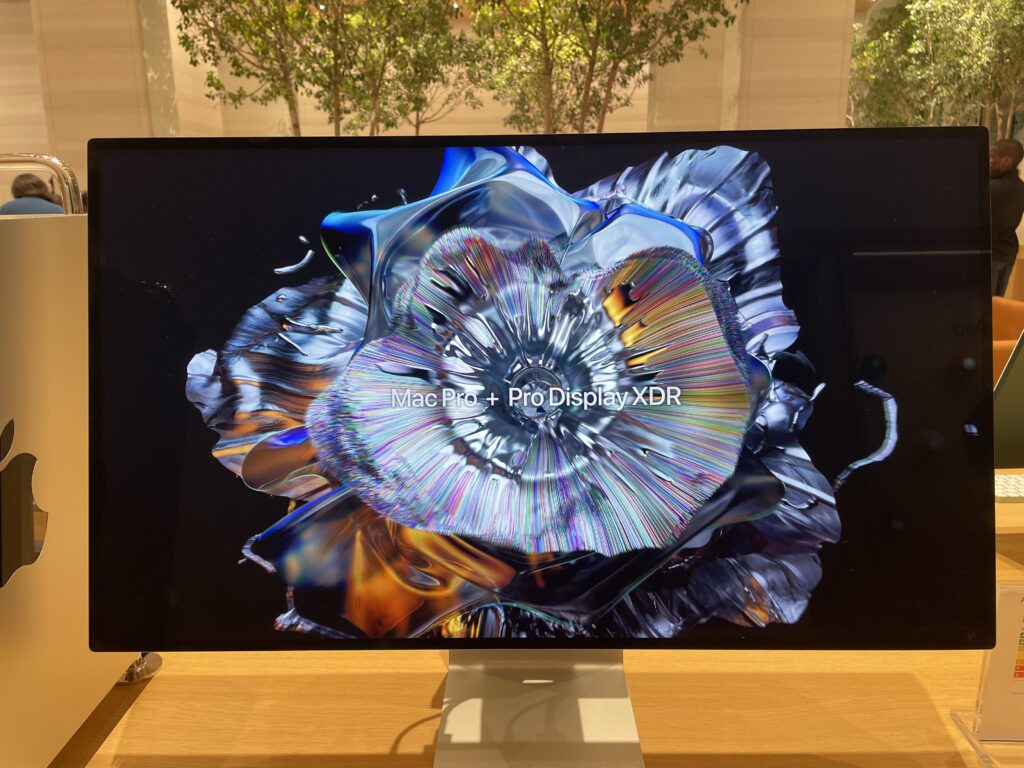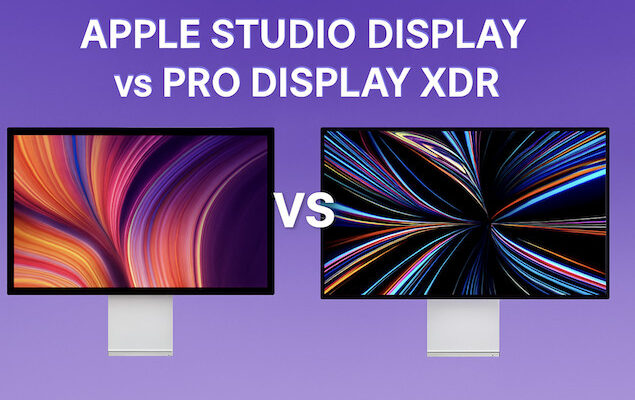If you’re a creative pro, there’s a good chance you’ve considered one of Apple’s premium displays to extend your screen estate. But deciding between the Apple Studio Display and the Pro Display XDR isn’t as simple as picking the more expensive one. Each screen targets a slightly different audience.
Many people cite the Pro Display XDR as the best alternative to the Studio Display but the reality is that at $5,000+, it’s simply not affordable for most.
While the Studio Display is easily the best 5K monitor for Macs, the Pro XDR offers an amazing 6K putting it on another level.
Below, we break down how these two incredible displays compare in real-world use – from screen quality to webcam features, speakers, ports and value for money.
Table of Contents
Price & Value
Studio Display:
- Starting price: $1,599
- Optional nano-texture glass adds $400
- Optional height-adjustable stand adds $400
Pro Display XDR:
- Starting price: $4,999
- Nano-texture glass option: +$1,000
- Pro Stand: +$999 (not included by default)
👉 Bottom Line: The Pro Display XDR is easily 3x the price once you factor in the stand – but it’s designed for demanding professionals working with HDR content and broadcast-grade color accuracy.
Screen Size & Resolution
| Feature | Studio Display | Pro Display XDR |
|---|---|---|
| Screen Size | 27 inches | 32 inches |
| Resolution | 5K (5120 × 2880) | 6K (6016 × 3384) |
| Pixel Density | 218 PPI | 218 PPI |
| Refresh Rate | 60Hz | 60Hz |
| HDR Support | ❌ No | ✅ Yes (up to 1600 nits peak) |
| Max Brightness | 600 nits (Apple spec) | 1000 nits sustained, 1600 peak (HDR) |
👉 Key Takeaway:
If you need true HDR performance for film, color grading or high-end visual effects, the Pro Display XDR is far superior. The Studio Display still delivers an excellent 5K image for general creative work but can’t do HDR.
Color Accuracy & Reference Modes
Both displays support the P3 wide color gamut and multiple reference modes. The Pro Display XDR, however, adds professional-grade presets – including HDR Video, Digital Cinema (P3-D65), and custom calibration options – making it far better suited for TV, film and print workflows that demand ultra-precise color control.
Design & Build
Studio Display:

- Sleek aluminum body with slim black bezels.
- Built-in 12MP ultra-wide webcam with Center Stage.
- Integrated 6-speaker sound system with Spatial Audio.
- Built-in triple-mic array for clear calls and recordings.
- Optional nano-texture glass for glare reduction.
Pro Display XDR:

- Larger, more striking design with a unique lattice thermal back.
- No webcam, speakers or microphones.
- Optional nano-texture glass for pro studio glare control.
- Uses the Pro Stand (sold separately) for magnetic mounting, height adjustment, tilt, and rotation – excellent for portrait mode editing.
👉 Design Verdict:
The Studio Display is an all-in-one monitor ideal for people who need great AV features built in. The XDR is a pure professional display – you’ll need to supply your own camera, speakers and mic.
Ports & Connectivity
Both displays come with:
- 3x USB-C downstream ports
- 1x Thunderbolt 3 upstream port (connects to your Mac and delivers power)
Both support a single-cable connection for video, audio and charging (up to 96W on the Studio Display). The Pro Display XDR also has a detachable power cable for easier cable management.
Webcam & Audio
Studio Display:
- Built-in 12MP camera supports Center Stage (auto-framing).
- Mic array for clear calls.
- 6-speaker system with force-cancelling woofers and tweeters.
- Supports Spatial Audio and Dolby Atmos.
Pro Display XDR:
- None of the above.
- Requires separate peripherals for video calls and audio output.
👉 If you take lots of calls, record content, or simply hate clutter, the Studio Display’s built-in AV hardware is a huge plus.
Brightness & Real-World Performance
Surprisingly, in non-HDR scenarios the Studio Display can get slightly brighter in practical tests (over 560 nits vs. around 467 nits for the XDR). But for true HDR workflows, the XDR’s peak 1,600 nits and local dimming capability leave the Studio Display in the dust.
Who Should Buy Which?
✅ Go Studio Display If:
- You’re a MacBook Pro or Mac Studio user wanting a beautiful 5K display for photo editing, everyday video work, design, writing and office work.
- You want built-in webcam, mic, and speakers.
- You don’t need HDR mastering.
✅ Go Pro Display XDR If:
- You work in pro-level video production, VFX, color grading or broadcast.
- You need sustained HDR, extreme brightness, precision color and custom calibration.
- Budget is less important than having a reference-grade panel.
Final Verdict
- Studio Display: The best “plug and play” monitor for most Mac users who want stunning image quality plus built-in camera, mics and sound – all for a “reasonable” premium Apple price.
- Pro Display XDR: A serious professional tool for those who truly need the ultimate in brightness, color fidelity and HDR performance. It’s overkill for everyday work – but for studios that demand it, there’s still no real substitute.


